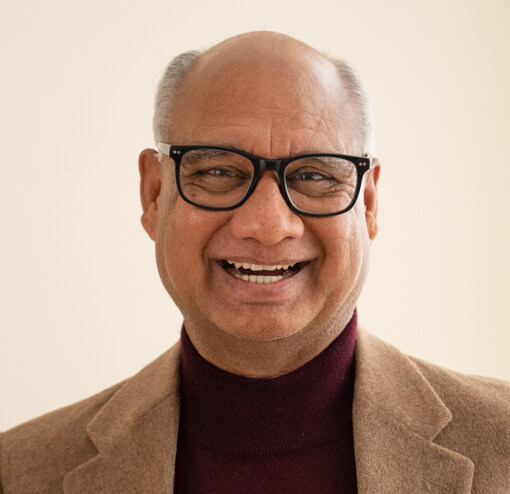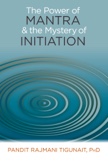Shaktipata is one of the most exciting concepts in the vast literature of yoga. That a master can transmit her spiritual power in an instant, freeing us from the hardships of practice and discipline, is a thrilling idea indeed. The problem is that many spiritual seekers think of shaktipata as a kind of instant lottery and, desiring to win, they often shift their attention away from practicing mantra meditation and cultivating an understanding of spirituality in the hope of finding someone who will bestow enlightenment with a touch. This reflects the widespread misunderstanding of what shaktipata initiation is all about.
The word shaktipata means “bestowing energy, or lighting the lamp.” It can be quite different from mantra initiation, however, for after mantra initiation mantra shakti unfolds its transformative power gradually as the student practices—each level of unfoldment and assimilation becomes the ground for the next. The pace of inner illumination is so natural and so gradual that we may not always be aware that it is taking place. But with certain kinds of shaktipata initiation, a level of energy the student has never before experienced is transmitted in an instant. And if the flow of energy is strong, the student is both startled and thrilled.
Shaktipata is the process by which a master leads prepared students to higher levels of consciousness. As a result, they gain a firsthand experience of the inner truth, and in the light of this the trivial concerns of lower reality lose their binding power. The student becomes fearless and selfless, realizing that he is under divine protection. All obstacles turn into means. Such is the fruit of shaktipata.
Shaktipata is the process by which a master leads prepared students to higher levels of consciousness.
Just as there are several levels of mantra initiation, so are there various levels and forms of shaktipata, some mild, others intense. Mild shaktipata gives the student a gentle push in the direction of spiritual unfoldment that may manifest simply as an increase in faith and determination and a decrease in sloth and doubt. A slightly more intense form of shaktipata may unleash a stream of inner joy, creating an environment that enables the mind to become one-pointed during meditation so that the mantra flows effortlessly. With the transmission of intense shaktipata, the student reaches the state of samadhi and experiences the oneness of mantra, ishta deva (the mantra’s presiding deity), gurudeva (the master as a channel of the Divine), and himself. As we shall see, all degrees of shaktipata may either come through a living teacher or flow directly from the grace of God.
Shaktipata is neither an accidental event nor part of a formal, scheduled ceremony. The shaktipata initiation that Swami Rama received from his master is a case in point. Swamiji was trained from an early age; he spent years practicing meditation and other spiritual disciplines under his master’s guidance, while studying the scriptures and learning from other adepts as well. He knew that his master was a great yogi and mystic, and he often saw adept practitioners visiting his master and receiving instructions from him.
After seventeen years of sincere and regular practice, Swamiji still had not attained a direct experience of Truth. After a long debate with himself, he decided to ask his master to bestow shaktipata on him, for he felt there was no other way to reach the goal. So he went to his master and said in a humble but firm voice, “For so long now I have been closing my eyes in meditation, and I end up with nothing but a headache. I have wasted my time, and I find little joy in life. I have worked hard and sincerely. You said that it would take fourteen years, and this is my seventeenth year of practice. I did everything that you told me to do. I am tired of life. If you do not do shaktipata for me, I will jump into the Ganges and drown.”

His master expressed no concern for him. Instead, he asked, “Are you sure you have been practicing sincerely and wholeheartedly? Have you been following my teachings? Did I ever teach you to commit suicide? When do you want to drown yourself?”
Swamiji had reached a point at which life without the spiritual ecstasy he was longing for held no further attraction. He replied, “Right now! I gave up everything. I’m of no use to the world; I’m of no use to you.” With that he got up and walked toward the Ganges.
Swamiji’s disappointment and dejection increased when his master told him, “You know how to swim. You’d better weight yourself down with rocks so that you can drown easily.”
With renewed determination Swamiji bowed his head and, saying goodbye to his master, he went to the Ganges and tied some big rocks around his waist. Then, when his master saw that Swamiji was fully determined to jump, he called, “Wait! Sit down there. In one minute I will give you samadhi.”
Although Swamiji did not know if his master really meant it, he thought it was worth waiting a minute to see. So he sat down in his meditative pose. His master came and touched his forehead. Immediately all thought constructs vanished. His consciousness turned inward and became so absorbed in the deepest level of his being that he no longer remembered that he had a body. As he writes in Living with the Himalayan Masters, Swamiji remained in that blissful state for nine hours, but the effect was long lasting. In addition to experiencing an unconditional inner bliss, he attained a state of fearlessness and selflessness, and he began to understand life properly.
Later Swamiji asked his master, “How did that experience descend? Was it due to your effort or my effort? And why, after all these years, did it happen when I was in such a desperate state of mind?”
His master replied, “It was grace. When a human being becomes exhausted after making all possible sincere efforts, and cries out in despair, the highest state of devotion emerges. And during that spontaneous devotional flood, the student attains ecstasy. That is called the grace of God. In a sense this grace is unconditional, but it is still the fruit of faithful and sincere effort. You had pursued your practice faithfully, and the subtlest obstacle was removed by that final touch. Shaktipata is the twilight in which self-effort ends and grace dawns.”
When Shaktipata Is Not Shaktipata
When a teacher gives in to an unprepared student’s demand to receive shaktipata, an unpleasant experience is bound to result. A teacher working under the guidance of her master and other sages of the lineage will not make such a mistake, but a teacher who falls under the influence of ego may show off and say, “Tomorrow I will give you shaktipata. Then you will know who I am and how great my master is.” With the power of her determination (sankalpa shakti) such a teacher may be able to awaken the dormant shakti within the student, but she creates a problem for herself, because by doing so she goes against the divine will. Such behavior simply feeds her ego and makes her selfish and hypocritical, and she will soon fall from grace.
When a teacher exerts her concentrated psychic powers indiscriminately over devoted students who are not prepared, the students are not able to assimilate the transmitted energy. Uncontrollable emotional fits of crying, laughing, singing, and dancing can result—even a nervous breakdown. Such displays have little or no spiritual value. Emotion properly channeled may help love and devotion unfold, but when strong emotions are stirred up which cannot be properly assimilated, damage can result. Some students may become spacey and apathetic. Those with subtle mental impurities may become egotistical and destructive. Fortunately, the effects of this kind of shaktipata do not last long. The allure of such teachers and their teachings evaporates, and most students move on to the next level of their search.
However, such occurrences raise a series of questions: Is it shaktipata if it comes from a teacher’s ego instead of from the primordial master? How can a teacher operate under the sway of ego if she is connected to the divine will? If a teacher’s ego is uncontrolled and she has a strong desire to impress students with her power, how can she bestow spiritual power? If it is not real spiritual power, is it shaktipata?
Is it shaktipata if it comes from a teacher’s ego instead of from the primordial master?
The answers are clear. It is not shaktipata but “ego-pata” if it does not come from the primordial master. Through practice and God’s grace, a teacher may gain spiritual power and afterwards, under the influence of ignorance and ego, may disconnect herself from the Source and begin to act independently. There are many instances of this throughout history. Ravana in Indian literature and Lucifer in Christian literature are examples of spiritually evolved beings who fell from grace yet retained the power to attract followers. But as long as a teacher remains connected to the divine will, she cannot make a mistake by conferring shaktipata on someone who is not ready, or by refusing shaktipata to someone destined for it. Love and compassion, accompanied with wisdom, flow effortlessly and spontaneously from such a teacher. A teacher who is not connected to the Source but is acting by her own whim may be able to bestow a mild degree of spiritual energy. But because it is contaminated by ego, it will have an adverse effect on the student’s psyche. This kind of transmission is not shaktipata.
The spiritual energy transmitted from master to student has its source in God. A teacher in human form is simply a vehicle for that transmission, and only after releasing her own self-identity into the perennial stream of guru shakti can she become an instrument in the hands of the Divine and light the lamps of others. But she will do only that which is determined by the Divine. There is no way God can make a mistake, either by bestowing grace or by blocking it. God whispers silently in the heart of the master, who then spontaneously transmits shaktipata to the prepared student.
Note: In the next post in this series Pandit Tigunait explores the two main categories of shaktipata—maha diksha, bestowing the highest samadhi, and krama diksha, a step-by-step process—and he describes the signs of shaktipata in students who have received it.
Source: The Power of Mantra and the Mystery of Initiation by Pandit Rajmani Tigunait

